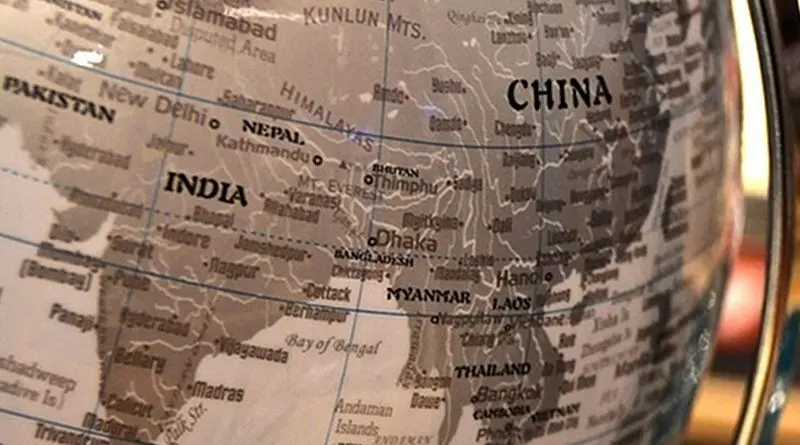India’s Pursuit Of Hypersonic Weapons: Effect On Strategic Stability In South Asia – OpEd
Hypersonic weapons are the latest trend in the revolution of military affairs. These weapons are believed to travel more than five times the speed of sound, difficult to be detected, and nearly impossible to be intercepted. The major military powers of the world, which includes the US, Russia, and China are investing huge sums of money in the acquisition of this technology. The South Asian region also holds importance and relevance in this regard, as seen by the advancements made by India in the pursuance of hypersonic weapons. Since the advent of mass nuclear power, a stable strategic environment has served as the foundation of peace in the region, which could be averted because of the introduction of such weapons and deterrence equilibrium could be shaken.
Hypersonic weapons are a new trend in the progression of technology. A hypersonic weapon is the amalgam of ballistic and cruise missiles, by adaption of the best features from both; the speed of the ballistic missile, and low altitude flight maneuverability from cruise missiles- thus creating the best kind of weapon in the present era. Hypersonic weapons are generally of two categories, the self-powered hypersonic cruise missile (HCMs) and the hypersonic boost-glide vehicles (HGVs). Both of these types entail the conventional rocket motor for the initial boost. The hypersonic cruise missile is powered by scramjet engines, which generally have a speed of around Mach 5- Mach 10 and operate at relatively low height, in the region of 30 km. Hypersonic Glide Vehicles, on the other hand, travel around 100 km, in space and attain an incredible speed of about Mach 20 while gliding through the upper atmosphere. Alongside many other technical details of the hypersonic weapons, the two foremost features of the weapons comprise high-speed and maneuverability.
The proliferation of hypersonic weapons has also echoed in the South Asian region, with India having tested the hypersonic technology demonstrator vehicle (HSTDV) and is developing BrahMos-II. India has also conducted the scramjet engine test in September 2020, which has been developed for the hypersonic technology demonstrator vehicle (HSTDV). As per the Indian calculations, the development of the scramjet engine would be the key component for the development of hypersonic cruise missiles in near future. Though India has tested the scramjet engine, with a minimum speed of Mach 5, which shows its technological advancement and intent for developing hypersonic weapons in the future, considering the minimum speed of the test, there is a long way to go for India, in developing hypersonic and counting itself in the league of elite nations. Very recently, India has reportedly started the coupling of HSTDV-03 with its booster of which the test might be conducted very soon.
Considering India’s intent to develop Hypersonic Cruise Missile, there isn’t any security concern for India to go for such a venture. The hypersonic missiles potently endow advantage against the nuclear missile defence system, because of its most important specification of maneuverability and speed. But that claim could not be justified as India doesn’t have any such kind of threat from either Pakistan or China, as both countries haven’t shown any serious intent in the acquisition of such technology. Hence India’s acquisition of hypersonic weapons is driven by prestige factors. India, in its acquisition of global power status, to be at par with the US, Russia, and China, is heading towards technological advancements. Also, the domestic political factor plays a huge role in the decision making of India; the scientific community also shores up such ambitious acts, and the Hindutva sentiment being awakened by politicians in their political railings also provoke the acquisition of new technologies, which can inflict huge damage in the South Asian strategic calculus.
The psychology of Mutual Assured Destruction, which upheld the balance of power for decades, could be evaded because of the reliance on hypersonic weapons by the respective states. In South Asia, hypersonic weapons pose a greater risk to regional stability. A region having two nuclear rivals, who have developed tactical nuclear weapons as well, the acquisition of hypersonic weapons, along with the access to the latest technology by India under its deal with the US (BECA), the strategic tilt could be towards India. Moreover, India, following its war-mongering approach, could go the adventuresome venture by conducting the counterforce strike against Pakistan.
In the same vein, the Indian aggressive behavior could compel Pakistan to go for the preemptive strike; it might also compel Pakistan to follow the same suit as a countermeasure. Thus, the hypersonic weapons irrespective of their payload-nuclear or conventional- and their efficacy, create instability in the south Asian region and thus leave a dilemma for Pakistan; which would be left with no choice but to revisit its strategy to deal with this Indian threat. In this regard, Pakistan needs to address the issue by either developing supersonic or hypersonic missiles or should at least figure a plausible way out by the provision and implementations of concrete steps vis-à-vis India, in its doctrine and policy-making, for maintaining the deterrence equilibrium in the South Asian region.
*Amber Afreen Abid is a Research Associate at Islamabad based think-tank “Strategic Vision Institute

